
The Fokker Scourge occurred during the First World War from July 1915 to early 1916. Imperial German Flying Corps units, equipped with Fokker Eindecker fighters, gained an advantage over the Royal Flying Corps (RFC) and the French Aéronautique Militaire.
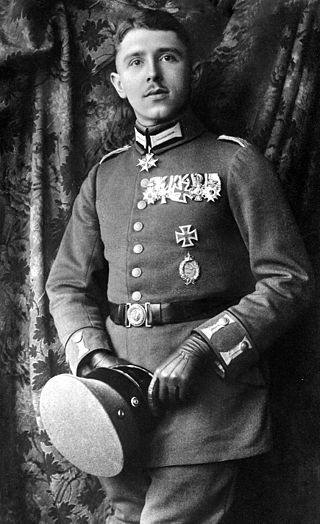
Max ImmelmannPLM was the first German World War I flying ace. He was a pioneer in fighter aviation and is often mistakenly credited with the first aerial victory using a synchronized gun, which was in fact achieved on 1 July 1915 by the German ace Kurt Wintgens. Immelmann was the first aviator to receive the Pour le Mérite, colloquially known as the "Blue Max" in his honour, being awarded it at the same time as Oswald Boelcke. His name has become attached to a common flying tactic, the Immelmann turn, and remains a byword in aviation. He is credited with 15 aerial victories.

Lanoe George Hawker, was a British flying ace of the First World War. Having seven credited victories, he was the third pilot to receive the Victoria Cross, the highest decoration for gallantry awarded to British and Commonwealth servicemen.
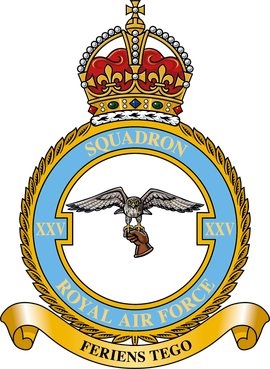
Number 25 (Fighter) Squadron is a squadron of the Royal Air Force having reformed on 8 September 2018.

Albert Ball, was a British fighter pilot during the First World War. At the time of his death he was the United Kingdom's leading flying ace, with 44 victories, and remained its fourth-highest scorer behind Edward Mannock, James McCudden, and George McElroy.
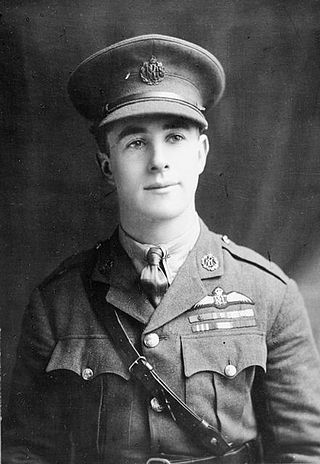
James Thomas Byford McCudden, was a British flying ace of the First World War and among the most highly decorated airmen in British military history. Born in 1895 to a middle class family with military traditions, McCudden joined the Royal Engineers in 1910. Having an interest in mechanics he transferred to the Royal Flying Corps (RFC) in 1913 at which time he first came into regular contact with aircraft. At the outbreak of war in 1914 he flew as an observer before training as a fighter pilot in 1916.
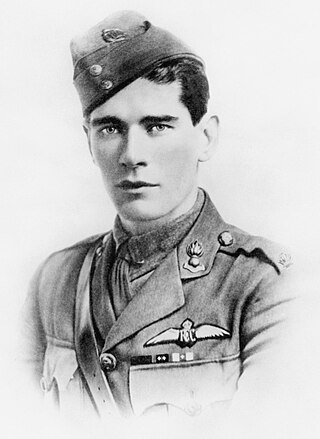
Edward Corringham "Mick" Mannock was a British-Irish flying ace who served in the Royal Flying Corps and Royal Air Force during the First World War. Mannock was a pioneer of fighter aircraft tactics in aerial warfare. At the time of his death he had amassed 61 aerial victories, making him the fifth highest scoring pilot of the war. Mannock was among the most decorated men in the British Armed Forces. He was honoured with the Military Cross twice, was one of the rare three-time recipients of the Distinguished Service Order, and was posthumously awarded the Victoria Cross.
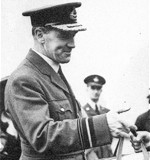
Air Vice-Marshal Sir Christopher Joseph Quintin Brand, was a South African officer of the Royal Air Force.

Arthur Percival Foley Rhys-Davids, was a British flying ace of the First World War.

Wing Commander Robert Roland Stanford Tuck, was a British fighter pilot, flying ace and test pilot. Tuck joined the Royal Air Force (RAF) in 1935 and first engaged in combat during the Battle of France, over Dunkirk, claiming his first victories. In September 1940 he was promoted to squadron leader and commanded a Hawker Hurricane squadron. In 1941–1942, Tuck participated in fighter sweeps over northern France. On 28 January 1942, he was hit by anti-aircraft fire, was forced to land in France, and was taken prisoner. At the time of his capture, Tuck had claimed 29 enemy aircraft destroyed, two shared destroyed, six probably destroyed, six damaged and one shared damaged.
Fred Parkinson Holliday, DSO, MC, AFC, was an Australian-born Canadian fighter pilot and ace of the First World War. He shot down 17 German aircraft between his entry into the war and its end, making him the 11th highest-scoring Australian-born pilot of the war. He served with the Royal Flying Corps and Royal Air Force throughout, in the No. 48 Squadron. He was awarded the Military Cross on 26 July 1917 for a particularly successful encounter with five German aircraft, and was later given the Distinguished Service Order.

Major William John Charles Kennedy-Cochran-Patrick DSO, MC & Bar was a Scottish First World War flying ace, credited with 21 aerial victories. He was the leading ace flying the Spad VII fighter, and of No. 23 Squadron. He later flew aerial surveys on three continents.
Robert Samuel Herring was a British officer who served in the Army and the Royal Air Force in both World Wars. In World War I he became a flying ace, and spent most of World War II as a prisoner of the Japanese.
Alfred Seymour Shepherd, was an Australian fighter ace of the First World War. He was credited with ten aerial victories. A civil engineer by profession, he enlisted in the Australian Imperial Force in 1915, and served with infantry battalions in France. He transferred to the Royal Flying Corps in 1916 and was posted to No. 29 Squadron, operating Nieuport fighters. After barely two months at the front, during which his victories earned him the Military Cross and the Distinguished Service Order, he was shot down and killed by a German ace in July 1917. He was buried in France.
Lieutenant Donald Wainwright Beard was a British World War I flying ace credited with eight aerial victories.
Group Captain Gilbert Ware Murlis Green, was a Royal Air Force career officer credited with eight aerial victories. He was a pioneer among fighter aces, and his victories were scored in a variety of theatres and flying environments. He was successful on both the Western Front, in Greece, and on his home soil. He also commanded two of the original night fighter squadrons.
Air Commodore Alan Duncan Bell-Irving was a Canadian First World War flying ace credited with seven aerial victories while serving in the British Royal Flying Corps. He also served in the Royal Canadian Air Force during the Second World War.
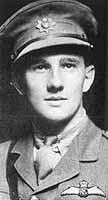
Flight Lieutenant Robert Leslie Chidlaw-Roberts was a Welsh World War I flying ace credited with ten aerial victories. During his aerial combat career, and in different dogfights, he engaged two famous German aces; he was one of the British pilots who downed Werner Voss, and on 9 January 1918, he shot down and killed Max Ritter von Müller.
Air Vice Marshal John Oliver Andrews, was an English flying ace of the First World War and later a senior officer in the Royal Air Force. He was credited with twelve aerial victories. His most significant victory was over German ace Stefan Kirmaier, although he also enjoyed some success against Max Immelmann and Manfred von Richthofen. He continued his military career through the Second World War, rising into increasingly responsible staff positions during the interwar years, then successively commanding two fighter groups during the war. His career was capped by his admission into the Order of the Bath.

Captain Clive Franklyn Collett was a World War I flying ace from New Zealand credited with 11 aerial victories. He was the first British or Commonwealth military pilot to use a parachute, in a test. While serving as a test pilot, he crashed to his death in a captured German fighter.














